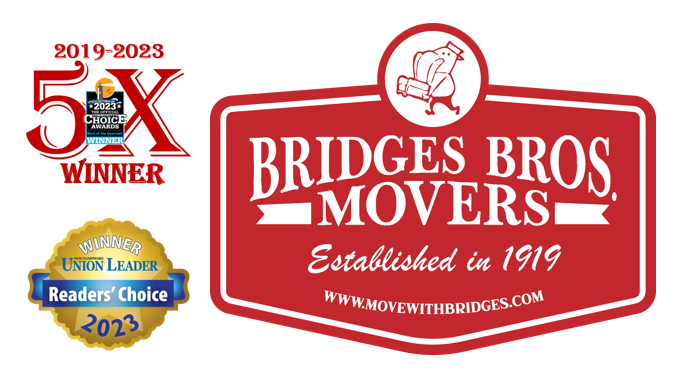Solving Your Storage Conundrum

Moving is stressful enough, but becomes even more complicated if you aren’t moving directly “from A to B” and need to find storage. You’ll not only need to plan the move, but also spend time determining what kind of storage you need and find an available storage solution. The demand for storage has increased significantly over the past 20+ years, as has the number of storage facilities, so there is likely a facility within a few miles of your location. However, the closest facility might not be the best option for you.
Storage solutions can vary based on price, accommodation and accessibility. Determining what you will be storing, whether it requires special environmental conditions (ie climate control) and whether you will need frequent access to the items while they are in storage are important things to figure out before you start researching storage solutions.
In this article, we look at the reasons you may need storage, the types of storage options that are available to you and how to select the storage solution that best fits your needs.
Why do you need storage?
In a previous blog we highlighted strategies to reduce what needs to be moved or stored (find this article here), but even after downsizing, donating, disposing, or selling items to lighten your move you probably still have a decent amount of items you can’t part with.
The reason you are putting items into storage is one factor that will help you decide on the best storage option for you. Some of the most common reasons for storage are:
- Sold a home and waiting to find/close on new home
- Waiting on new construction to be built
- Waiting for lease to start
- Having carpets cleaned or floors re-finished
- Downsizing
- Keeping certain items safe i.e. pianos, artwork
- Keeping seasonal items tucked away until right time
Storage Solutions
Moving Company Storage
 Many moving companies offer short-term and long-term storage at their own facility, which is one way of making your move easier. This eliminates the added effort of booking a storage unit, dealing with paperwork and managing another monthly bill. Instead everything is streamlined as part of the mover’s services and included in the paperwork you are already doing with them.
Many moving companies offer short-term and long-term storage at their own facility, which is one way of making your move easier. This eliminates the added effort of booking a storage unit, dealing with paperwork and managing another monthly bill. Instead everything is streamlined as part of the mover’s services and included in the paperwork you are already doing with them.
Mover’s storage typically offers the biggest opportunity for savings, as well. The monthly fee to store items in a moving company’s warehouse is on average 10-15% less than the cost of a 3rd party facility and moving pads will usually be provided at no additional cost, saving you pad rental fees that can add hundreds of dollars to your overall costs.
Additionally, the time required to deliver your shipment into storage and load it out for final delivery will often be less because the items are transferred directly from the truck to storage containers on the mover’s loading dock. By comparison, delivery into a 3rd party facility may require your shipment to be carried to a unit inside the building and possibly to an upper level, adding significant time and hundreds of dollars in labor cost.
While this option offers the most savings and convenience, it is important to know that your access to items in storage will be very limited when storing in a mover’s warehouse. Your items will be stored in multiple storage containers and stacked in the warehouse. This means you will need to schedule a time to access your items in storage and there will be a cost to have the storage containers pulled out of their warehousing location to allow you to access the items you need. Many people find that it makes sense to rent a small 3rd party storage unit to hold the few items they may want (ie, seasonal items like sports equipment, winter clothes, etc) while storing the majority of their items with their mover, knowing they won’t need to access those items until they are delivered to their final destination.
Self-Storage Units (‘Ambient’ & Climate Controlled)
Today you will find multiple storage facilities in just about every town. The majority of these facilities offer storage in buildings that are essentially a collection of open garage bays in varying sizes.
This type of storage offers the most access and most convenience to you as the storage client. You will have the option to access your unit any time you want during the facility’s business hours and some facilities even offer 24-hour key card access. You will als be able to pull right up to your unit to load/unload items.
Keep in mind that these units are not humidity or temperature controlled, so the climate inside your storage unit is the same as the climate outside of your unit. Depending on your location, this could mean extreme temperatures or high levels of humidity. This may not be the best storage environment for some items, for example: antique furniture, artwork and certain musical instruments like pianos. And you will need to purchase or rent moving pads to keep your items protected, which will add to your cost. (Depending on the location of your storage facility, there may also be some added travel costs from your mover)
Certain items including pianos, delicate artwork, collectables and archival documents are recommended to be stored in ‘climate controlled’ conditions. This means that the temperature and humidity level in the unit are kept within specific ranges.
Climate controlled units are essential for storing certain items, but they are by far the most expensive storage solution. The majority of your furniture and other belongings will not be affected by high/low temperature or environmental humidity, so be sure to only rent a climate controlled unit for the items that truly need it.
Onsite Containers

This type of storage can be delivered right to your home. Onsite containers can be kept on your property to be used for storage, can be loaded and stored at the container company’s facility or can be used for point-to-point moves. If you are renovating a large part of your home and need to relocate furniture for a few weeks, renting a container to keep on site offers an easy storage solution without the need for a moving truck.
Containers can also be a good option if you need to store the contents of your home between the time you move out of one location and into another. While you will incur delivery, pickup and rental fees, those costs may be less than the cost to move items into a storage facility and then out again in some scenarios.
There are some potential risks to using moving containers. The opportunity for items to be damaged can increase, since the loaded container will be moved on and off of a truck multiple times and contents may shift, especially if the container has not been loaded by a professional mover who is trained to secure the load properly. The containers are typically ‘out in the elements’, so there is also the possibility of the container leaking when wet weather occurs and/or issues caused by extreme temperatures that can climb well above 100* if the container is sitting in direct sun.
Loading Your Storage
After finding the right type of unit it is important to pack and load everything correctly. The best way to ensure that your storage unit is packed safely and efficiently is to hire a professional mover. Their ability to maximize storage space may actually allow you to rent a smaller unit than you could if you attempted to load the unit yourself, which again will save you money in the longer run.
If you are packing up a unit yourself make sure that you load safely with heavy, stable items at the bottom and lighter items at the top. It’s also important to pad wrap items for protection from scratches and other damage, as items may shift when you go to remove them from the unit. And be sure that the items you may want to grab at some point are easily accessible (right in the front!)
Decision Time
There are a number of considerations when selecting a storage unit. Often you won’t be able to make a final decision until you’ve contacted a few facilities and/or movers. It is a good idea to explain to them what you are looking to store and ask for their professional recommendation on the best storage approach. Of course, it’s also important to get a few quotes, so that you can compare the cost of the different solutions that are available.



